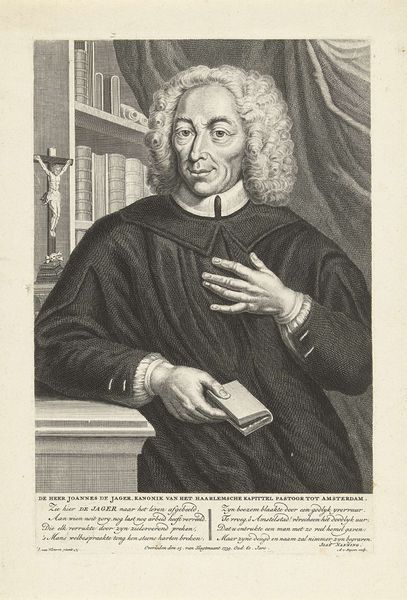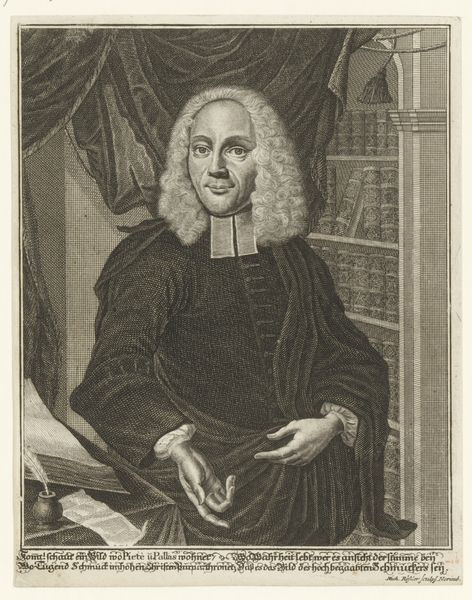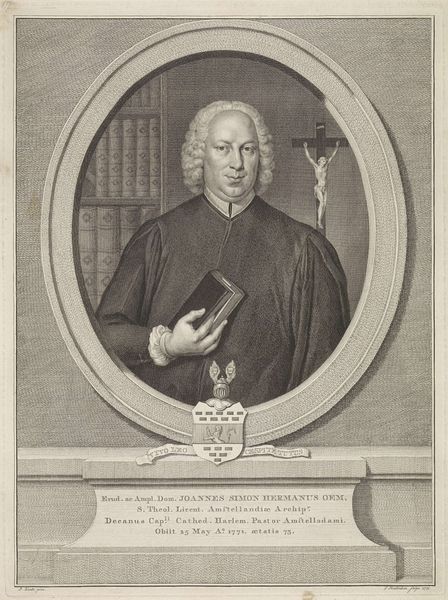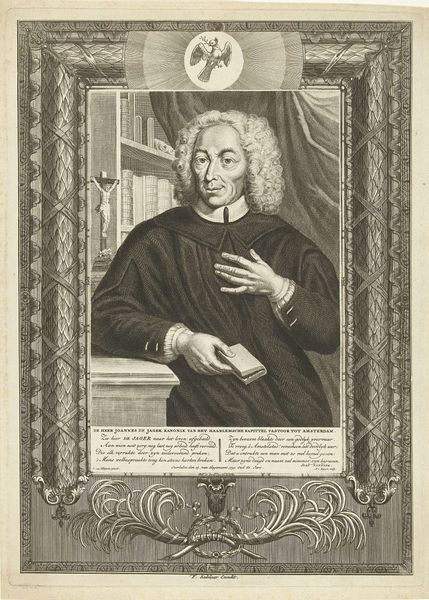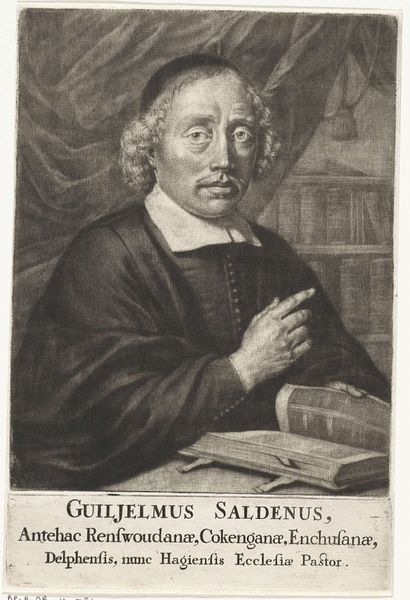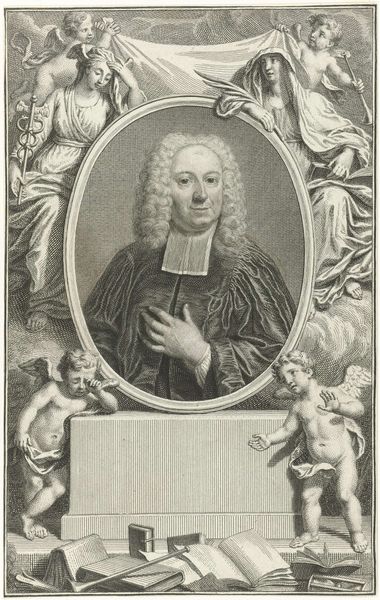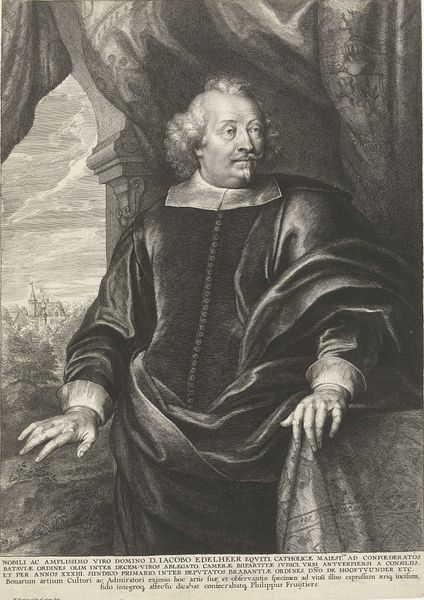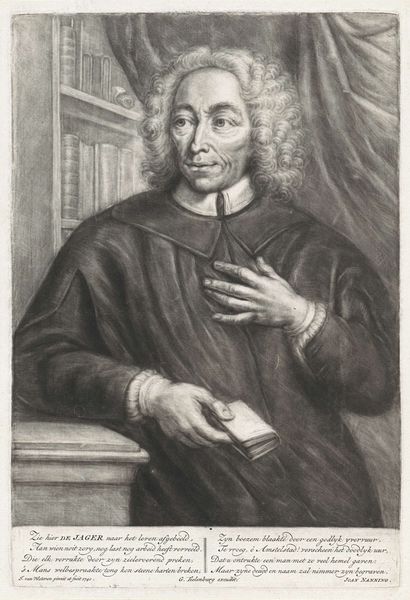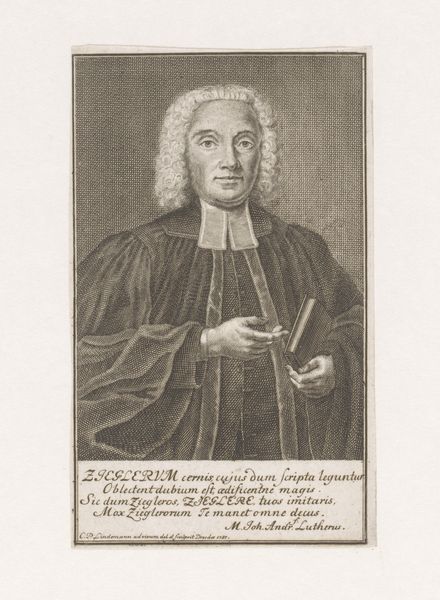
engraving
#
portrait
#
baroque
#
book
#
portrait reference
#
portrait drawing
#
engraving
Dimensions: height 313 mm, width 212 mm
Copyright: Rijks Museum: Open Domain
Curator: There's a quiet strength radiating from this engraving. What are your initial thoughts? Editor: Intrigued. The sitter's gaze meets ours with unsettling directness. There’s an ambiguity in his expression, perhaps weariness mixed with knowingness. It is titled "Portret van Florentius Ignatius Camina" created sometime between 1723 and 1763, and attributed to Johannes van Vilsteren. Let’s unpack the elements at play here. Curator: Agreed. The sitter appears to be a member of the clergy given the crucifix visible in the background and the book that he’s holding—likely a prayer book or similar text of religious significance. His dress also reflects this high societal rank. We should address what Camina’s role was and how that may have given rise to the conditions from which this image emerged. Editor: Focusing on the image itself, I am struck by the contrast between the textured rendering of the hair and the smoothness of the face. The oval frame around the portrait focuses our attention, but it is not merely decorative; it emphasizes containment and draws the eye back into the central subject. Curator: I think that that reading leaves a lot out. Looking through a contemporary lens, I am thinking about who had access to commissioning portraits during this period? And also what power did the sitter possess at the time of the engraving? We need to consider class, religion, and even geographical location to gain an insightful, rather than superficial, understanding. Editor: While socio-historical perspectives offer valuable context, I want to observe closely how Vilsteren guides the viewer through shadow and light, drawing attention to details. Curator: It's hard to disconnect the construction of the portrait from the power structures inherent within that society. And it's our role to question and analyze the intent behind such commissions, even if we can still appreciate the artist's skill. But now our time is nearly up. I hope visitors will spend some time researching and discovering for themselves the social and religious circumstances from which it arose. Editor: Indeed. Let us also take the time to allow this engraving to speak to our senses through formal, visual engagement and, also, close looking.
Comments
No comments
Be the first to comment and join the conversation on the ultimate creative platform.
